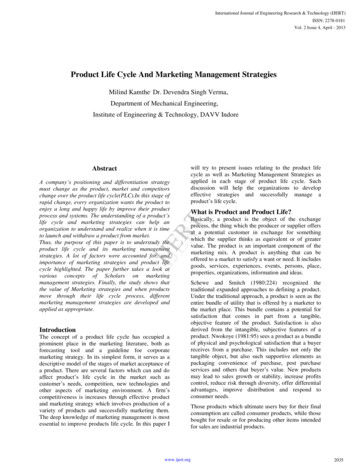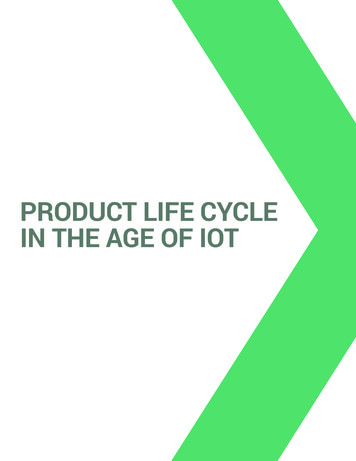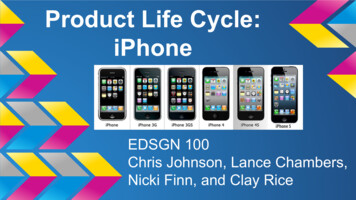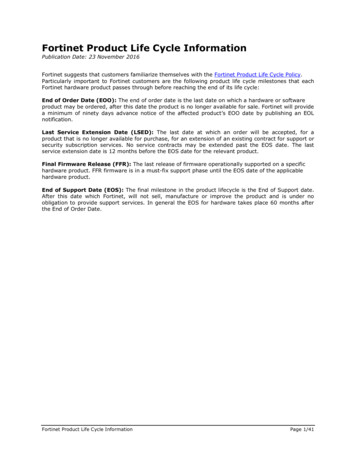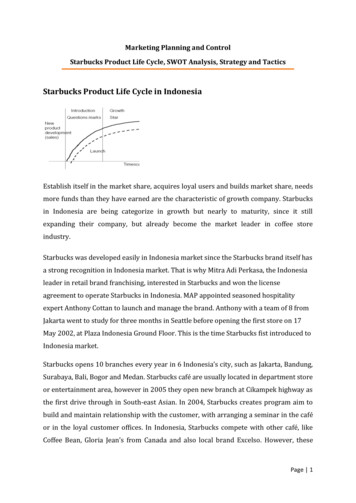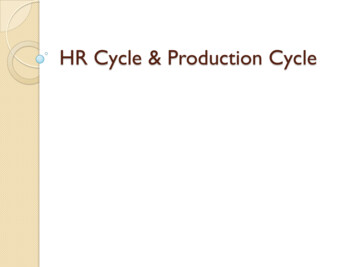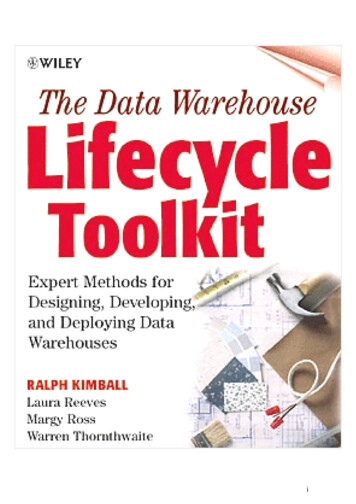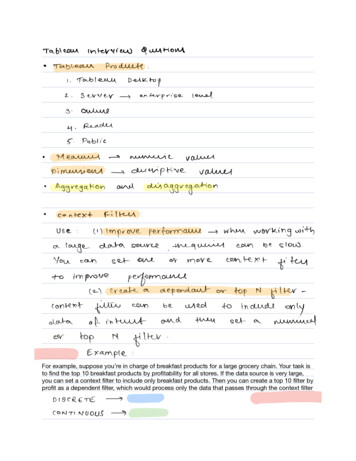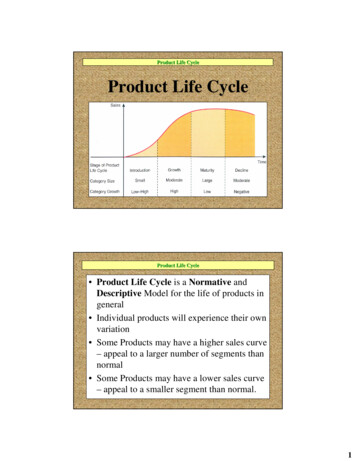
Transcription
Product Life CycleProduct Life CycleProduct Life Cycle Product Life Cycle is a Normative andDescriptive Model for the life of products ingeneral Individual products will experience their ownvariation Some Products may have a higher sales curve– appeal to a larger number of segments thannormal Some Products may have a lower sales curve– appeal to a smaller segment than normal.1
Product Life Cycle Some Products may have a longer segmentin the curve or a longer curve over all. How long does it take to go from Invention toInnovation?Product Life Cycle Some Products may have a longer segmentin the curve or a longer curve over all. How long does it take to go from Invention toInnovation?ProductInvention InnovationFluorescent Lamp18591938Television19191941Xerography193719502
Product Life Cycle Some Products may have a longer segmentin the curve or a longer curve over all. The Safety Razor was invented by Gillette in1895, the Gillette Safety Razor Companyintroduced the product in 1904. Where is it now in its Product Life Cycle?Product Life Cycle Some Products may have a shorter segmentin the curve or a shorter curve over all. Freon Refrigerants were invented in 1930 andintroduced in a product – Refrigerator – in1931.3
Product Life Cycle Some Products may have a shorter segmentin the curve or a shorter curve over all. Anyone know about Pokemon prior to 1998? Where is it now in its Product Life Cycle? “On the East Coast, retailers are discounting the newest setof collectable Pokemon trading cards in an attempt to jumpstart sales.” (Sacramento Bee, June 3, 2000, p. I1) A Short Product Life Cycle is one of thehallmarks of a FAD.Product Life Cycle Product Life Cycle is a Normative andDescriptive Model for the life of products ingeneral The PLC’s importance to marketing decisionmakers is to help identify appropriate strategiesand tactics for presenting a product. Each stage represents a different set ofuncontrollable variables to consider in thedevelopment of product and market strategies.4
Product Life Cycle In the Introductory StageThe Product is UnknownThe Price is generally highThe Placement is selectiveThe Promotion is generally personalized andinformativeProduct Life Cycle In the Growth StageThe Product’s capabilities are being recognizedThe Price will begin to decline, with volumeThe Placement becomes more wide spreadThe Promotion is focused on the product’s needsatisfying properties5
Product Life Cycle In the Maturity StageThe Product is competing with alternativesThe Price reaches it’s lowest pointThe Placement is intenseThe Promotion is focused on the competitionand repeat purchasingProduct Life Cycle In the Decline StageThe Product faces reduced competitionThe Price rises as volume declinesThe Placement tends back to being selectiveThe Promotion is focused on reminding6
Product Life Cycle The Receivers change from stage to stage and,therefore The Decoding changes from stage to stage The Receiver changes are modeled as theAdoption Curve or The Diffusion ofInnovations (Winer, p. 420-1).Product Life CycleDiffusion of InnovationsSource: Rogers, Everett M, Diffusion of Innovations, 4th ed. (New York: Free Press, 1995.7
Product Life Cycle The Adoption Curve, like the PLC, is aNormative and Descriptive Model to aiddecision making Some Receivers are Innovators, some areLaggards, and some are in between. Where your product is in the PLC relates towhich group of receivers you should beaddressing. Each of the adopter categories has its owncharacteristicsProduct Life Cycle Innovators are there at the beginning (2.5%) Innovators are not a true receiver They will create their own solution to a feltneed and, in many situations, spur the senderinto developing a commercial product PC as an example – the Innovators were thebuilders of Heath Kit and North Star computersor they bought used main frames and installedthem in their homes.8
Product Life CycleEarly Adopters are the first true receivers (13.5%)They tend to be the risk-takers and trend setters.They tend to be youngerThey utilize a great number of informationsources that tend to be in closer contact with theorigin of new ideas – personal selling They tend to be viewed as information sourcesby their network of peers. They are the Receivers during the Introductoryand early Growth stages of the PLC Product Life Cycle Early Majority are the profitable receivers (34%) They are the Receivers of the Growth and earlypart of the Maturity Stages (the part of the PLCthat tends to generate the highest profitability) They are the first to utilize advertising as a majorinformation source They also follow the lead of the Early Adopters9
Product Life Cycle Late Majority are the last true receivers (34%) They are the Receivers of the Maturity Stagewhen the product is firmly established They are skeptical and risk aversive They utilize advertising and mass media asmajor information sourcesProduct Life Cycle Laggards are the last receivers (16%) They are the Receivers of the later MaturityStage and the Decline Stage They are tradition bound and very slow tochange They tend to be immune advertising, waitinguntil the product has become tradition itself10
Some Products may have a higher sales curve – appeal to a larger number of segments than normal Some Products may have a lower sales curve – appeal to a smaller segment than normal. 2 Product Life Cycle Some Products may have a longer segment in the curve or a longer curve over all. How long does it take to go from Invention to Innovation? Product Life Cycle Some .


